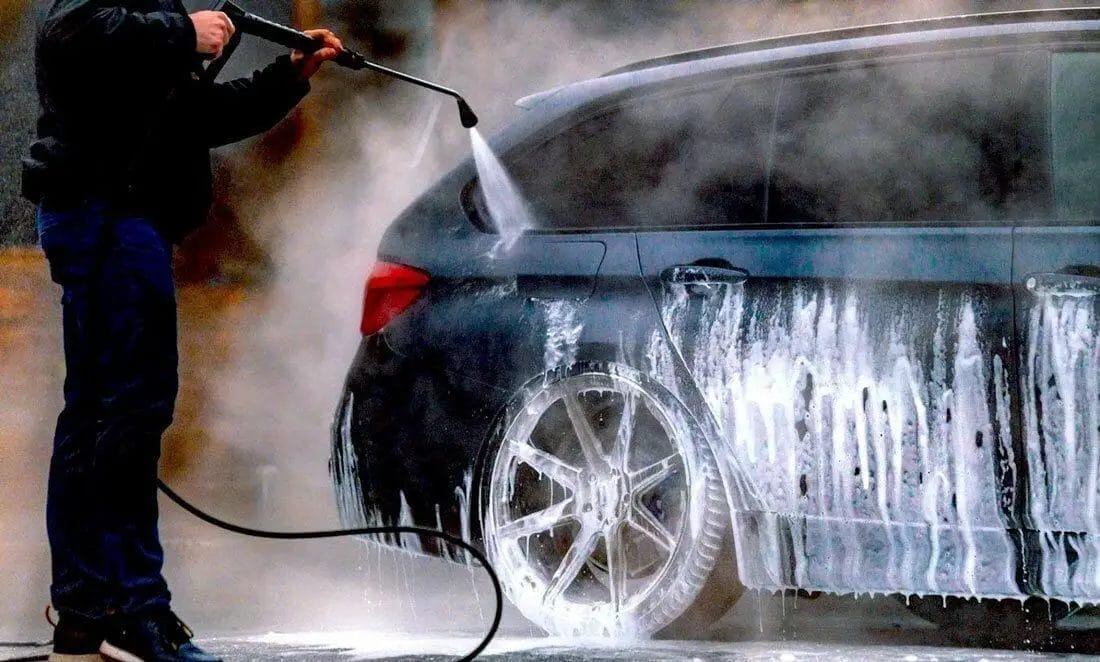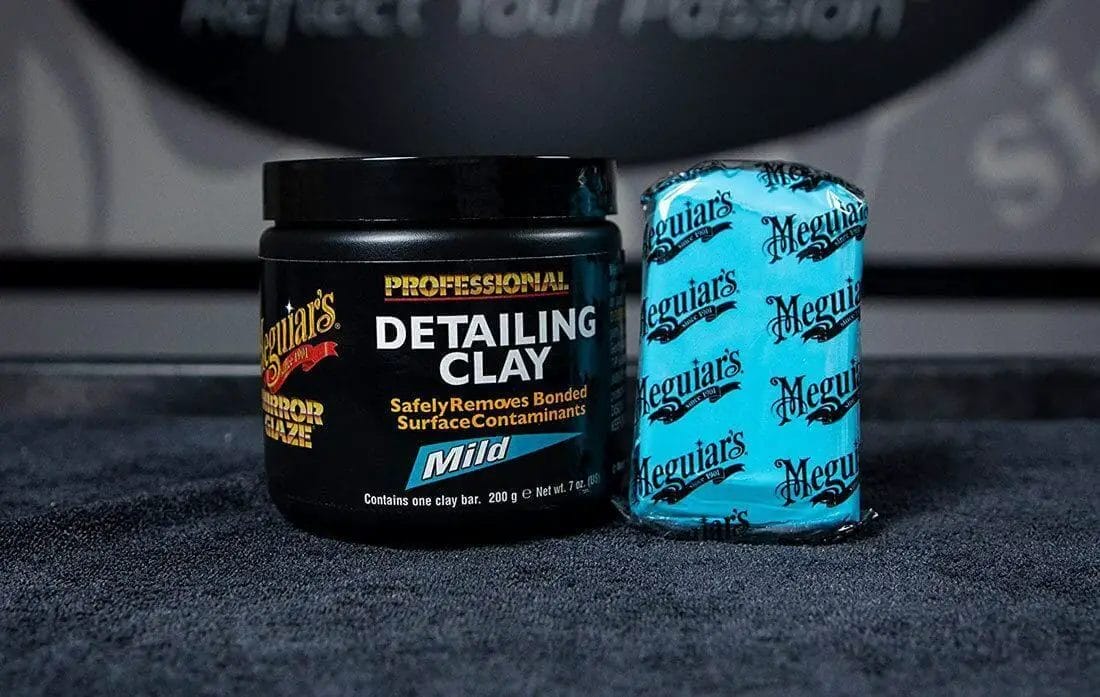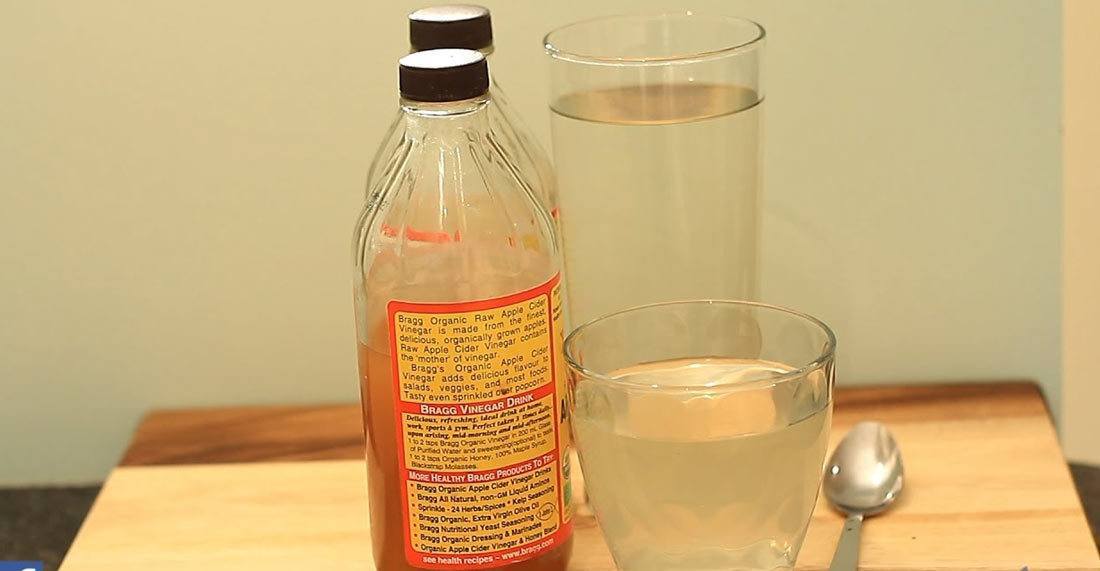When water comes in contact with your car, there is no problem. But when there is the presence of particles such as rust, dirt, etc., it can result in a rather annoying water spot.
In most cases, the water spot on cars won't come off and can affect the beauty of your vehicle by leading to scratches on the surface.
Car users have spent a lot of money yearly in trying to remove water spots from their cars. However, knowing how to get hard water stains off a car will help you save funds and keep your car looking great at all times.
That and more is what we will dive into today in ways that you can remove water spots for good. So no more dull looking car.
The reason for the formation of the water spot is simple. Water spot emerges when the water mixed with minerals is left to dry without being wiped from the glass. So, when the water evaporates, the crystals will be left behind.

But even when rainwater takes the blame for causing spots on car windows, other factors are also to blame for it. Spots on windows are also caused by water sprinkler spraying on the window, rain leaking from the glass, and others.
So, if you can know these loopholes, you can look for a way to curtail it. You will stop having water spots on your window. However, some windows come with factory-applied treatment to help prevent water spots.
Types of Water Spots

The type of spots created by water differ. In this regard, water spots can be grouped into three types.
Regular Water Spot
This is a type of water spot caused by old tap water. When regular tap water touches the car paint, they can cause a buildup of total dissolved solids (TDS).
Natural occurring minerals are found in water, especially hard water. Hard water has minerals such as magnesium and calcium, which causes spots or scaly deposits, which are difficult to clean off.
Bonded Mineral
These are spots caused by microscopic particles. The particles are formed from forest fires, emission from plants and vehicles, dust, and smoke from wood stoves. Bonded minerals form when these particles fall on your car as tiny dust and mix with rainwater to taint the paint.
Rainwater is acidic to some extent, especially acid rain. Acid rain contains a large amount of nitric and sulfuric acid, which is absorbed from the atmosphere. So, these particles come together to form water spots leaving behind the deposits after the water evaporates.
When these deposits bond with the paint of your car, it can even wash off the clear coat if not thoroughly cleaned.
Etching
This form of water spot is seen when the water spots left on the car is baked into the car by high heat or sunlight. In severe etching cases, you may need to use abrasive to rectify the situation. In other cases, you have to add wet sand to the abrasive to remove it.
However, to handle this situation, you may require the help of a qualified professional. This is because improper handling and application will lead to total damage to the car's body beyond repair.
How to Get Hard Water Stains Off Car

Washing Your Vehicle
This is one of the most straightforward ways of removing water spots from cars. Washing the car very well will cause the sediments to loose off.
Although most experts advise that you wash your car with distilled water or in-line water softener, many consumers cannot afford this distilled water. Therefore, you can get some bottles of distilled water to rinse your car after washing.

To wash your car, here are the materials you need:
- A hose
- Sponge
- A bucket with warm water
- A bucket with warm, soapy water
- Washing mitt
- Drying towel (Microfiber)
Pack your car in a place away from direct sunlight; this will help keep your car wet, as drying will result in more water spot formation.
Start by washing the wheels of the car to prevent soot and grime from splattering on the car's clean areas. It is advisable to use washing mitt with long strands to avoid debris from grinding into the vehicle.
Rinse the debris away as soon as you wash, do not wait to finish washing before rinsing.
Rinse your mitt bucket as you wash to prevent it from spreading dirt to other areas. And, replace dirty rinse buckets when needed.
Rince the entire car again and wipe using a clean towel. Do not let the car air dry and, if possible, use a quality microfiber towel to air dry.
White Vinegar Bath
White vinegar comes to play when there are still some traces of mineral deposits after a thorough wash up.
White vinegar is a lower pH content of acetic acid and can function as an excellent hard spot water remover.

This is because the minerals in hard water contain calcium hydroxide, and calcium hydroxide has a high pH, which makes them clean out when treated with vinegar or other low pH removers.
What You Require
- White vinegar
- A sponge
- Distilled water
- Clean microfibre towel
- Bucket (small size)
Firstly, prepare your vinegar solution by pouring an equal part of vinegar and distilled water into the bucket. Distilled water is preferable as it makes the solution more acidic because it is free of minerals that may weaken the pH of the vinegar.
Smear a bit of the mixture with a clean, sponge on a water spot and leave it for about one minute to loosen and dissolve the water stain. Then rinse and wipe the area till it dries out.
Continue the process and apply it until every part of the car is clear of the water. When using, ensure to carefully apply the vinegar to avoid scratching the paint due to aggressive rubbing.
Also, after applying the vinegar solution on the car, it tends to remove sealants and waxes it, so we advise you re-apply sealant or wax to renew and protect your car paint.
Detailing Clay

Detailing clay is another effective way of removing water spots. This method eliminates metal particles, brake dust, rail dust, and other particles that cause water spots. Note that detailing clay is done after washing the car and using vinegar spray.
For clay spraying, here are the materials you need:
- Clay bar or clay mitt
- Spray lubricating solution
- Microfiber towel
Apply the lubricating solution on different sections of the clay bar. Then rub it on the water spot area using a forward or backward method. Then dry it using the micro cloth.
Do not rub the clay bar on the water spot area in a circular motion to avoid damaging the paint surface.
Paint Correction or Polishing
This is the last stage of removing water stains from a car. To do this, start by applying a cutting compound to the affected surface. Then spread the product on a small section once at a time. Do a light smearing of the product as adding much product does not amount to a better result.

Using a mechanical polisher or your hand, massage the compound deep into the paint surface. Rub it in an up and down, then left to right motion.
You can add a coat of high-quality car wax or ceramic coating product to prevent the paint from damaging.
This method is quite tricky and can lead to damage if done wrongly. So, get an expert to do it for you if you are not comfortable with it.
How to Prevent Water Spots
- Wash your car every two weeks using the two bucket method, one for washing, and the other for rinsing. Do not allow your vehicle to air dry while embarking on this method.
- Dry your car with a microfiber towel, or use compressed air to dry out the window seal to prevent drips.
- Avoid water sprinkles or driving through puddles. So, be more conscious of where you park your car.
- Using a paint sealant helps protect your glass against hydrophobic properties by repelling water from sticking to your paint.
How To Remove Water Spots From Car Windows

Having a water spot on your car window can be very disturbing. However, there are methods you can use to rectify such issues. Here is how to get hard water stains off car windows:
Lemon
Lemon is very active in mobbing up water spots. All you have to do is slice the lemon in half and massage it on the window with considerable pressure. The acidic nature of lemon will make the hard stain wipe off with ease.

Then, you can clean off the excess lemon using a soft fabric or paper cloth. Round up the whole cleaning process with a spray of glass cleaner and clean it off with newspaper for a streak-free shine.
Vinegar And Water
Make a mixture of equal portions of vinegar and distilled water to form a solution and spray it on the glass. Ensure the mix covers the part with the highest water spot buildup entirely.

Then allow it to sit on it for about a minute or two, re-spray the glass when it dries. Soak a small rough towel with vinegar and water solution and use it as a sponge to scrub the glass. Then using a soft cloth or paper towel, dry water off the window. If there are still water spots left in the window, repeat the process or read this full guide.
Baking Soda and Water
Baking soda and water is a very effective water spot remover for glass.

Start by making a paste using baking soda and a small amount of water. Add the mixture to a cloth and scrub the window. Apply pressure to ensure the abrasive granules of the baking soda take out the hard water spot from the window. Then rinse the glass thoroughly with water, and use a traditional glass cleaner and newspaper to remove all other residues from the window.
Cleaning Products From The Store

You can get a commercial cleaner from the store. The products are available to remove water spots, like meguiar's hard water spot remover. Ensure to follow the instructions given by the manufacturer to get the best results.
Also, some products are not specifically made for cleaning windows and may leave streaks. To get a more desired result, finish the treatment by spraying glass cleaner on the surface and wipe it off using a newspaper.
How To Get Hard Water Stains Off Car - Video
Conclusion
Now that you know how to get hard water stains off a car, removing water spots from your vehicle will be a breeze.
However, you have to ensure caution when taking out water stains to avoid scratching the surface of your car as well as removing sealants or wax from your vehicle. But, if this happens, ensure to re-apply sealants or wax.
However, for etching, using an abrasive material will be needed to eradicate water stains.
We recommend that you seek a professional to help you in the process to avoid irreparable damage to your car surface.
Sarah J. Gregory
352 Hershell Hollow Road
Anaheim, CA 92805






